Extra displacement of the fighter P-38 "Lightning"
Why does Lightning need such a hefty cabin?
The aircraft was built according to a two-beam scheme with a cockpit located in the fuselage gondola in the middle. And there’s one mystery connected with this gondola. The gondola is large - its length was over 6 meters, and the largest lateral dimension (height) in the place where the pilot's seat was, reached 2 meters!
This is very funny, because the central section of the Lightning is longer than the entire Soviet I-16 fighter, from the propeller to the trailing edge of the rudder! And just a couple of meters shorter than the MiG-3.
The 6-meter section of the MiG fuselage was enough to place an engine weighing almost a ton (the length of the AM-35 cylinder block is more than 2 meters!), With all the necessary fuel fittings and cooling radiators, weapons, then the cockpit, with the seat, instruments and controls, followed by a lowered garrot, smoothly turning into a vertical keel. Kiel added the remaining couple of meters to the length of the MiG (the full length of the fighter is 8,25 m).
For some reason, the Lightning's fuselage gondola (also over 6 meters) was enough only to the pilot's cabin and weapon: 20-mm gun and four machine guns. No wonder for that era. One of the modifications MiG-3 also demonstrated the possibility of installing two synchronized 20-mm guns above the engine, in front of the cockpit (there was enough space, the question was about the engine with the required power).
The middle section of the Lightning was not only long, but also unexpectedly high! A fuselage of such dimensions would be enough to accommodate an engine with an oil cooler sticking out from under it.
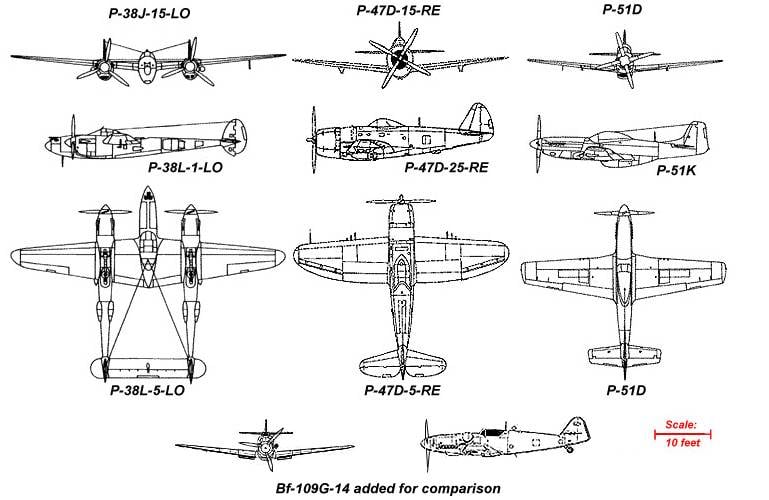
But the Lightning engines were placed in front of the fuselage beams, to the left and right of the central gondola.
Lightning's fuel tanks were in the wing.
Nothing more substantial in the central section of the P-38, in theory, should not be. Because of its lightness, the gondola even received a supporting skin (i.e., without power set): smooth duralumin sheets provided the necessary strength.
What was the useful place in the gondola spent on?
Answer: its entire lower part was occupied by the nose landing gear compartment! And at this place story "Lightning" turns into the most complete absurdity. However, this is never a joke. Everyone can verify the validity of the conclusions by comparing the figures and drawings.
For the first time, twenty years ago, the Russian historian-researcher Oleg Teslenko drew attention to the paradoxical construction of Lightning. He then expanded his view of the problem somewhat and obtained unexpected results. It can be said that he did all the work for Clarence "Kelly" Johnson, a famous aircraft designer, in addition to Lightning, who had a hand in creating the U-2 and the controversial F-104 fighter, nicknamed the Widower.
You can have a different attitude to the opinion of enthusiasts and all kinds of lovers. But, as follows from the epic with F-104, even professionals in their field, such as Kelly Johnson, are capable of making serious mistakes.
Therefore, the presented point of view has the right to be voiced. It provides a lot of food for the mind and develops creative thinking.
The entire bottom of the fuselage nacelle P-38 was occupied by the nose landing gear compartment. But that's not all. Even taking into account the maximum tire diameter (500 mm) between the retracted landing gear and the cockpit flooring, an 30-centimeter “clearance” was obtained. Extra free space.
Further in the design there is an even more paradoxical element.
Ideally, the nacelle was long enough to fit the landing gear wheel behind the back of the pilot's seat. In reality, it was exactly under the cockpit. As if Clarence Johnson did everything to increase the height of the gondola!
And he really did.
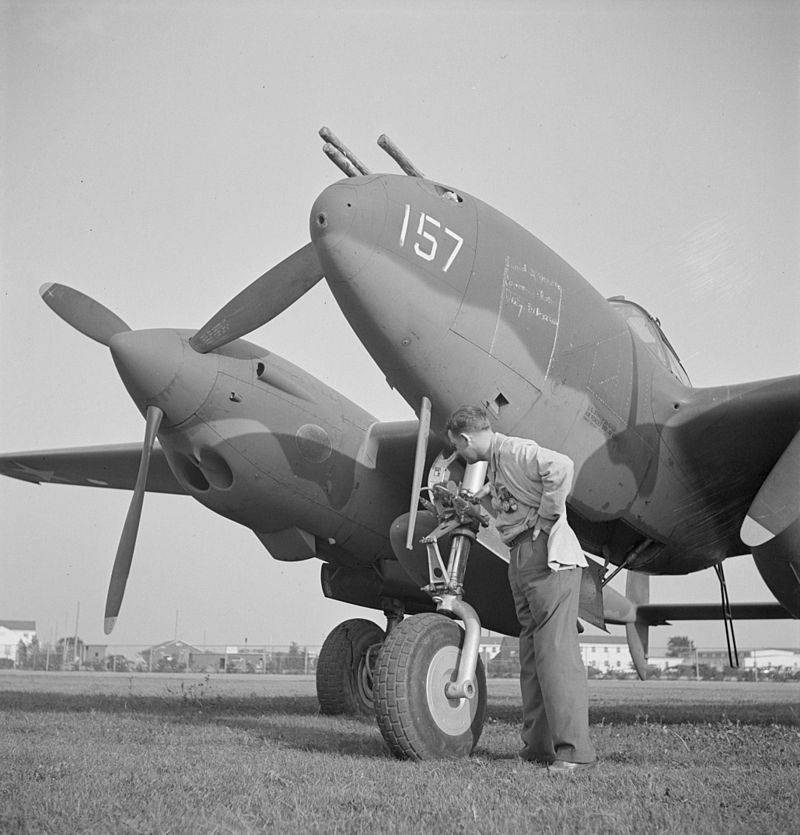
Clarence Johnson was aware that with a three-point chassis design with a bow strut, the length of the main struts was not enough to provide a safe distance from the propellers to the ground. Especially in the case of "Lightning", in which the location of the engines was purely geometrical disadvantageous compared to classic fighters, in which the propeller was located in the bow, which was highly "raised" above the ground.
Only the long nose stance, which in this case turned out to be too long and fragile, could "lift" the plane. The threat of frequent breakdowns of the landing gear was created.
Many designers found themselves in a similar situation - when for various reasons the aircraft required a large "clearance" without the possibility of lengthening the landing gear. Therefore, the designers changed the aircraft itself, in one way or another, "underestimating" it in the places of mounting the racks.
The most famous example is the German Stuck dive with a W-shaped kink. Also did the creators of "Corsair"; the durability of a landing gear for a deck aircraft was a sacred parameter.
In this case, the creators of Lightning artificially increased the dimensions of the gondolaso that its bottom edge is as close to the ground as possible.
The payment for this decision was the increased drag. But the designers had no choice ...
Any problem can be solved. And solved not only in one way
Clarence Johnson managed to build an unusual aircraft with a nose landing gear, avoiding the dangers associated with the fragility of the landing gear.
But the question arises: were there any alternatives to a very difficult decision?
Of course they were.
Aviation He knows an example of an aircraft of a similar pattern - the German intelligence officer FW-189 (nicknamed "Rama"). The Germans managed a classic for that time chassis design with two main struts and a tail wheel. Which was removed by turning to the left, into a special niche located in the thickness of the stabilizer.
As for the bulky central gondola 6 meters long and 2 meters high, then excuse me ... There were jobs for three crew members, two movable firing installations and reconnaissance equipment. A high-resolution stationary camera mounted on a massive frame - such a "pinhole", created in the first half of the twentieth century, had outstanding mass and dimensions.
In general, the designers of the Fokke-Wool company simply did not bother with the nose strut of the chassis due to the not-so-special need of such a scheme for a piston-era aircraft.
The creators of the P-82 Twin Mustang, whose design was very similar to the Lightning (except for the lack of a central gondola), found an even more beautiful solution. For such a "square" aircraft with two fuselages, the most suitable ... four-point chassis.
Such a scheme significantly increases steering stability and virtually eliminates the problems associated with touching the ground with the tail during landing.
Together, all the solutions presented would save for Lightning several hundred kilograms of mass and significantly reduce drag. The need for a front strut, its hydraulic drive and a separate turning mechanism would disappear, the size of the nacelle would be reduced, the chassis compartment would disappear - along with the drive of its wings. On the other hand, the fighter’s performance, stability and patency would increase, especially when taxiing and taking off from unpaved airfields.
All this could be considered a naked theory, but the FW-189 and P-82 are real machines that have successfully proved themselves in practice and in military operations.
But Clarence "Kelly" Johnson decided in his own way.
For what purpose did he obsessively try to “shove” a bulky nose stance onto the fighter, “stretching” the central gondola in all directions? This moment will forever remain an unsolved mystery of aviation.
Lightning first had a tail chassis
Fighter "Lightning", most likely, was originally designed for the scheme of the chassis with a tail wheel. The proof is the "rudiment" in the form of a tilt of the main landing gear. O. Teslenko draws attention to the fact that the struts in the released position have a pronounced forward inclination, which is senseless and even harmful for a three-post aircraft with a nose wheel.
By all the rules of physics and geometry, the landing gear should be as far away as possible from the center of gravity of the aircraft. By the way, it is no coincidence that the Lightning has such a long gondola - it was necessary to place the nose strut as far forward as possible, away from the line of the main landing gear.
The forward landing gear of the main landing gear was an essential feature of all piston aircraft with a tail landing gear, which made it possible to increase their stability during take-off. Aircraft that had a nose stance, on the contrary, tilted the main stances back. An obvious example is the Bell P-39 Aerocobra:
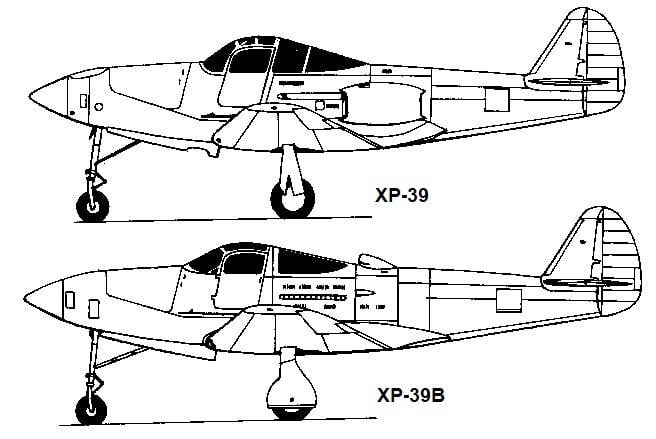
Lightning is an amazing airplane in every way.
I'm afraid that from this point I will no longer tell anything that could be new or unknown to the reader.
The P-38 Lightning was not a bad fighter, but it cannot be called the most successful. The evolution in aviation was amazingly fast, and the fighter created in 1939 was soon outdated.
The effectiveness of Lightning depended heavily on theater conditions.
The Germans considered the "Doppelschwanz" the weakest and most "light-weighted" Allied fighter. The main reason was the engines, which had poor performance at altitudes above 6000 m, despite the presence of turbocharging. By the way, all fighters with Allison engines (P-38 Lightning, P-39 Aerocobra, P-40 Tomahok) showed themselves only at low and medium altitudes.
Another problem was the cockpit, unable to provide heating during flights at high altitudes, where the temperature overboard could drop to minus 50 °.
Finally, insufficient roll speed. The most important parameter for a fighter, which in practice determines, for example, the ability to leave the enemy’s sight at the last moment.
Lightning’s career on the European theater was short (1943-44), in the last year of the war it was completely replaced by more advanced fighters. Nevertheless, fighters of this type managed to complete 130 000 sorties over Europe with a loss level of 1,3% (over 1700 aircraft).
In the Pacific, Lightning appeared earlier and was able to reach its full potential. It seemed that this heavy fighter was specially created for long flights over the ocean. Two engines gave twice as many chances to return home. Weapons without synchronizers allowed to increase the rate of fire. The location of the trunks near the longitudinal axis of the aircraft provided excellent accuracy of fire. One of the first fighters with turbocharged engines (the presence of this system played a role in the choice of layout). Thanks to the exhaust combined with a turbocharging system, the Lightning was at first considered one of the “quietest” fighters. Armed to the teeth and equipped. Not a plane - a dream.
Despite the relatively small number of Lightnings (the smallest series, among other well-known fighters - Thunders, Mustangs, Hellkets, Corsairs, Tomahokov ...), the brainchild of Kelly Johnson earned his fame. At the "Lightnings" flew the top three overseas aces. “Lightnings” were used in the most striking operations, for example, the elimination of Admiral Yamamoto. At the Lightning, St. Exupery flew off on his last flight.
It was an interesting car. The only question is: could it be better?
When writing the material, the article by O. Teslenko “Lightning” was designed irrationally ”.
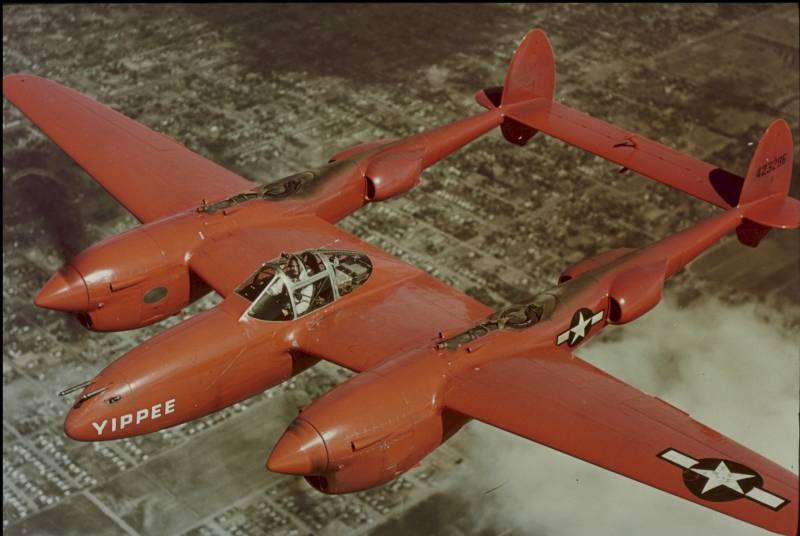

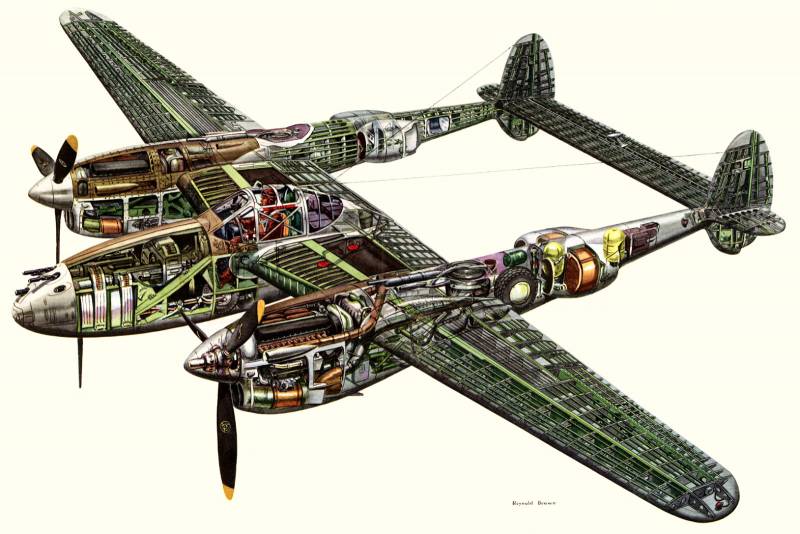
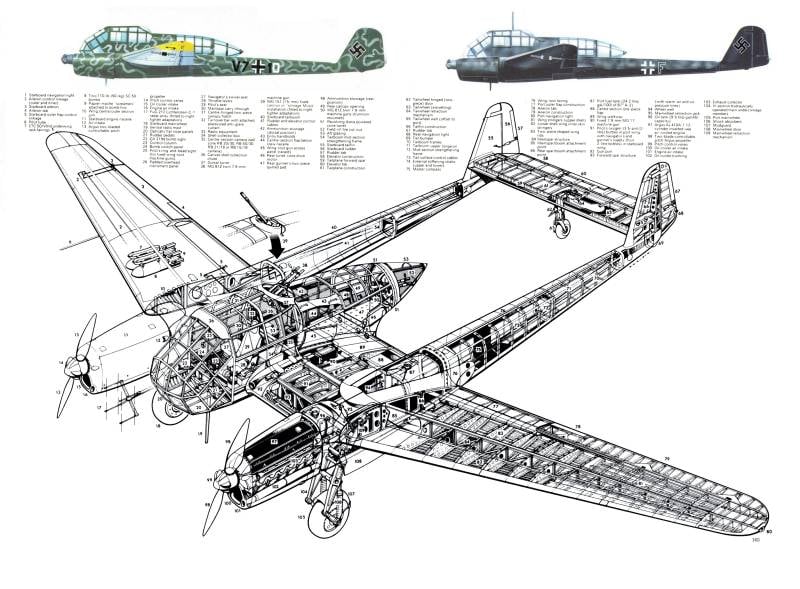
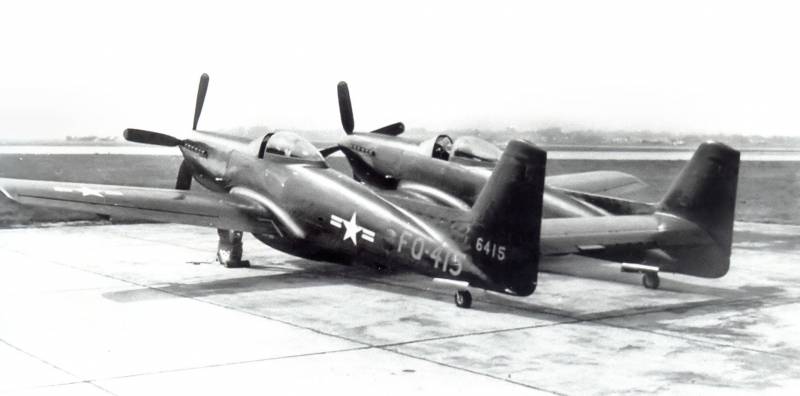
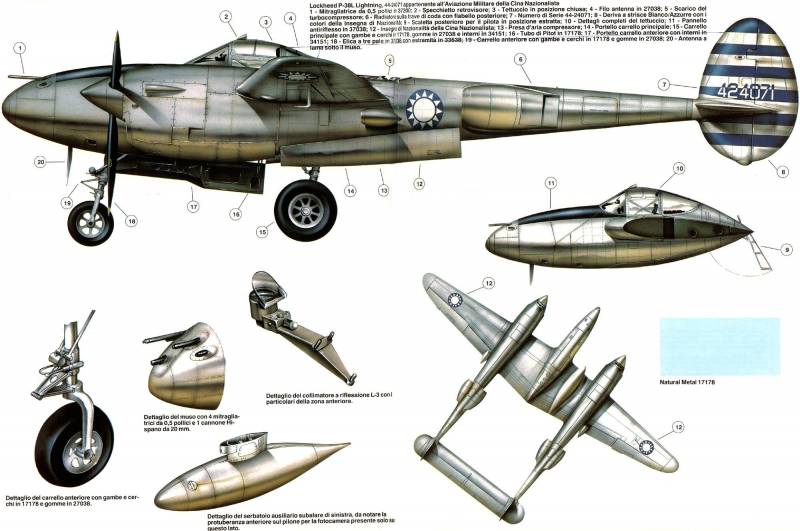
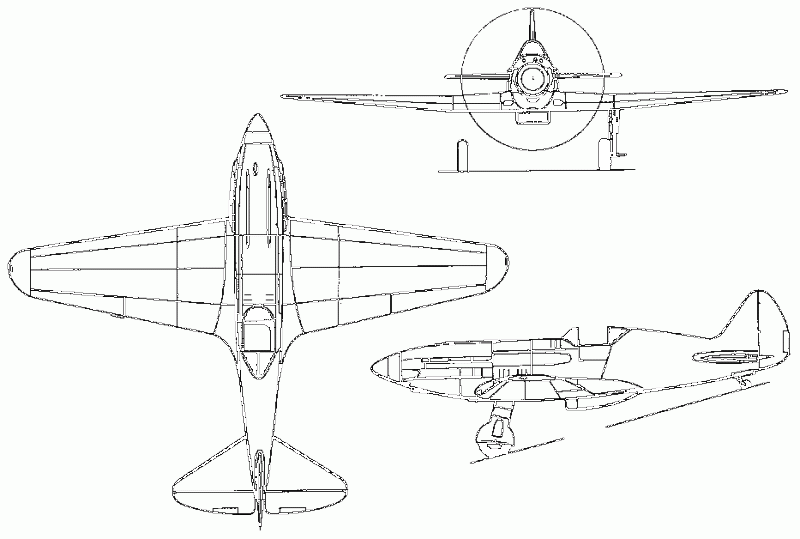
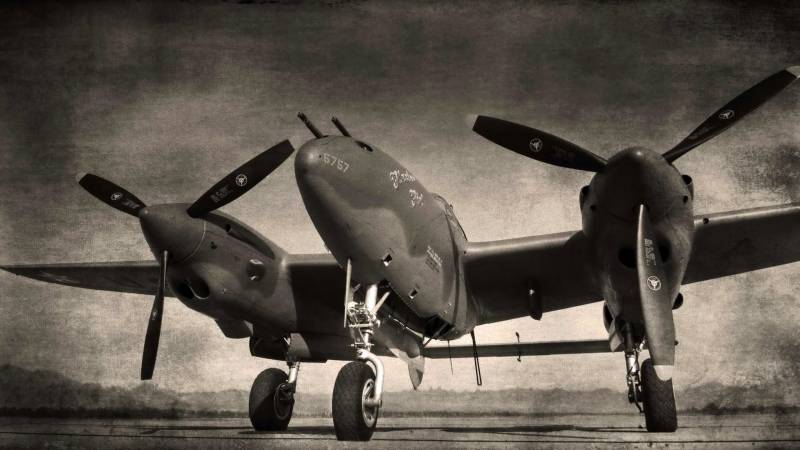
Information